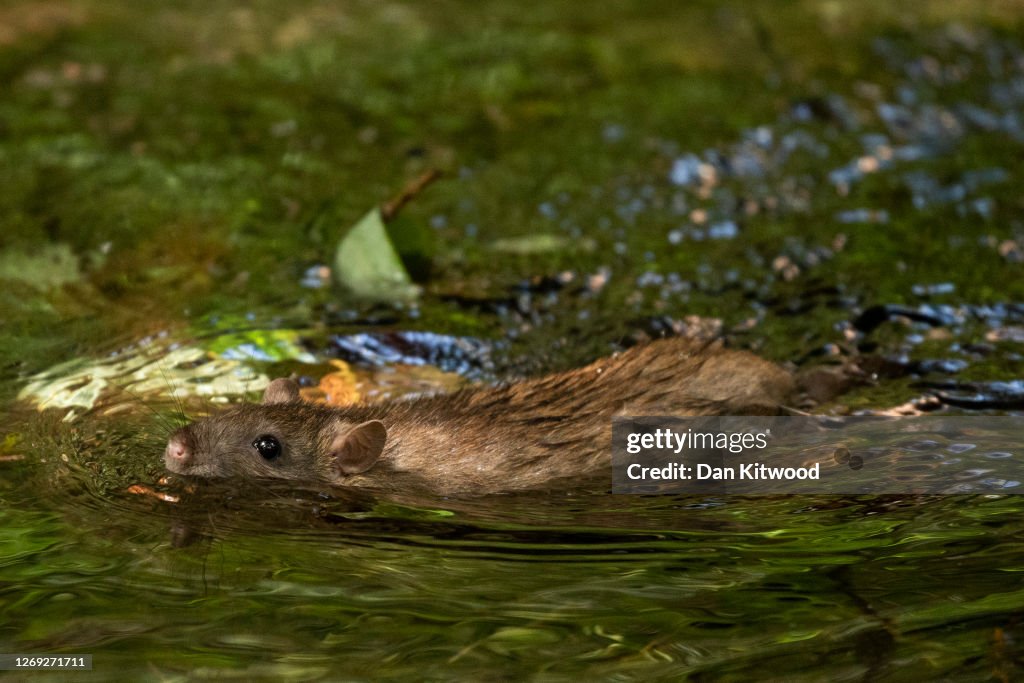England's Chalk Streams Under Threat
CARSHALTON, ENGLAND - AUGUST 24: A brown rat swims in the river Wandle near the rivers source at Carshalton Ponds, on August 24, 2020 in Carshalton, England. The river Wandle is a tributary of the river Thames running north for around 14 km through Croydon, Sutton, Merton before meeting the Thames in Wandsworth. The river was heavily industrialised in the 18th and 19th centuries with around 90 mills along its length and was thought to be the most heavily polluted river in England. Admiral Lord Nelson who lived at Merton Place between 1801 and 1805 fished the river. Of the world’s 224 chalk streams, 161 are in England. These rare waterways, formed by springs in chalk bedrock, are often compared to rainforests in terms of their ecological importance, creating rich habitats for otter, kingfishers, trout, water vole and a wide range of plants like water-crowfoot and flag iris. As with rainforests, environmental groups consider them in a state of crisis, endangered by development, agricultural practices, a rise on non-native species, over-abstraction and climate change. In the UK, a few of chalk streams do enjoy special protections, such as the Itchen, the Avon, and the Lambourn, which are designated as international Special Areas of Conservation (SACs). A further eight are designated as nationally important Sites of Special Scientific Interest (SSSIs). Many, however, have dried up along large sections, or completely. Conservationists worry that proposed changes to laws governing the cleanliness of UK rivers – changes made possible by Brexit and the departure from the EU’s water framework directive – will further threaten remaining chalk streams. (Photo by Dan Kitwood/Getty Images)

PURCHASE A LICENCE
How can I use this image?
£375.00
GBP
DETAILS
Restrictions:
Contact your local office for all commercial or promotional uses.
Credit:
Editorial #:
1269271711
Collection:
Getty Images News
Date created:
24 August, 2020
Upload date:
Licence type:
Release info:
Not released. More information
Source:
Getty Images Europe
Object name:
cr1a2380_2020082483054037
Max file size:
3434 x 2289 px (29.07 x 19.38 cm) - 300 dpi - 7 MB